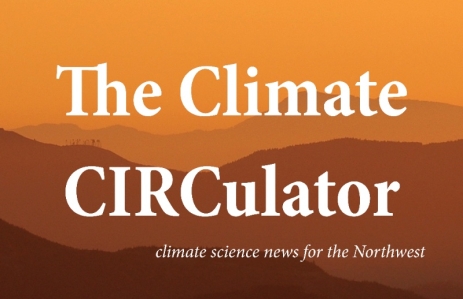Global temperatures are rising faster at higher elevations, suggests a growing body of evidence. Yet the phenomenon — the aptly named elevation-dependent warming (EDW) — has been notoriously hard to track.
Starting a conversation about how to tackle the problem is a recent paper published in Nature Climate Change. The paper’s researchers, an international team calling itself the EDW Working Group, examine the mechanism underlying elevation-dependent warming and then strategize ways to track future warming in the high elevations.
The problem is this: There aren’t enough high-elevation stations to effectively track EDW. For instance, here in the Northwest, there’s a paucity of long-term temperature records above about 3,000 feet. Since we can’t create long records ex post facto, the EDW Working Group instead proposes getting creative with the modeling tools available. To do that requires understanding the processes at play in elevation-dependent warming.
One important process identified by the researchers is disappearing snowpack. At elevations just above snowline, a small amount of warming can lead to a decline in snow, and kick off a positive feedback loop, instigating still more warming. The feedback loop works like this: As reflective white snow melts, it exposes the darker surface beneath. The darker surface absorbs more solar energy than the white snow, lowering “albedo” (reflection coefficient) and increasing temperatures. A similar — though much slower — process is the upslope migration of the world’s timberlines, another factor that darkens the surface.
Several atmospheric processes also contribute to local warming at high elevations. When clouds form (usually because air is rising), moisture condenses at the base of the cloud and releases heat. If the average altitude of the cloud base shifts upward, that could also affect elevation-dependent warming. The researchers cite papers that suggest this phenomenon has occurred over the Tibetan plateau and the Alps.
Other factors include downward infrared energy flux and its relationship to moisture profiles, and radiative energy from polluted air. While observations are probably inadequate to pin down these factors, modeling studies, the EDW Working Group suggests, hold out the prospect of better estimates of their importance.
Note: A forthcoming paper by CIRC researchers Philip Mote, David Rupp and others provides a new perspective using high-resolution regional climate models.
 A professor of atmospheric sciences at Oregon State University, Philip Mote heads CIRC’s Climate Science activity. Along with co-leading CIRC, Phil directs the Oregon Climate Change Research Institute (OCCRI) and the Oregon Climate Service, and has helped co-lead several long-term research projects looking into the impacts of climate change. You might also find him rowing along the Northwest’s scenic waterways.
A professor of atmospheric sciences at Oregon State University, Philip Mote heads CIRC’s Climate Science activity. Along with co-leading CIRC, Phil directs the Oregon Climate Change Research Institute (OCCRI) and the Oregon Climate Service, and has helped co-lead several long-term research projects looking into the impacts of climate change. You might also find him rowing along the Northwest’s scenic waterways.


Stay up to date on the latest climate science news for the Northwest, subscribe to the CIRCulator.
